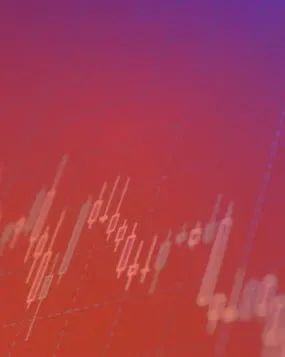What is Ripple?
Ripple (XRP) was originally designed as a payment solution using blockchain technology which aimed to solve issues impacting digital payment systems. Ripple fulfils a global need for a cryptocurrency that facilitates cross-border payments without the usual costs and delays associated with other currency transfers.
Ripple is the cryptocurrency that has been embraced by some of the leading names in international banking, like Santander, American Express and Standard Chartered, who want to use Ripple for their own cross-border payments.
The potential for the growth of Ripple is considerable as it seeks to be a common currency that can support other transactions. The fact that the big institutions are backing it means it is fulfilling a need within the payments ecosystem.
Ripple transactions are a lot quicker than many other cryptocurrency transactions – for buyers of the currency, a transaction can take seconds rather than hours or days.
How to trade Ripple
Many people are using Ripple to make international payments already, but it can still be cumbersome to trade Ripple on a regular basis using an exchange. You can take advantage of the price volatility to trade on price movements of Ripple using CFDs.
Ripple has a real-world value in currency, which will go up and down over time. This is the amount of another established currency (for example USD) one Ripple unit can be exchanged for.
- No need for a wallet: take advantage of Ripple price volatility without the need for a wallet
- Volatility: react more quickly to changes in price without owning Ripple
- Leverage: trade Ripple with only a small initial investment
Ripple can be traded around the clock (except weekends), as it does not depend on a particular market being open.
Be aware, however, that using leverage to trade Ripple means you will be more exposed to changes in the price. Make sure that you keep stop losses in place to protect yourself against sudden price reversals and you are aware of what your total exposure to the Ripple price is.
Interested in Ripple trading? Get started today by opening an account with City Index.
Buying vs trading Ripple
Buying Ripple requires the use of specialist cryptocurrency platforms and a cryptocurrency ‘wallet’ to store your currency in.
A benefit of trading Ripple via CFDs is having a market maker taking the other side of the trade, meaning market depth is less of an issue than trading on exchange.
Trading Ripple using a CFD allows you to react even more quickly to price changes and take advantage of short-term volatility. You don’t need to own Ripple to be able to trade its price.
Factors impacting Ripple
There were some early concerns about what might happen if the banks in the Ripple network dumped a large amount of the cryptocurrency on the market. As a consequence, the network has stored 55 million in smart contracts (a reserve of the currency) which is being fed into the market at the rate of 1 million every month.
This process copies the effect of mining with other cryptocurrencies but Ripple itself is not a cryptocurrency that relies on mining to sustain itself. It is first and foremost a payments platform.
As of January 2022, there was an ongoing court case brought by the SEC against Ripple that alleges that XRP sales have constituted unregistered securities trades since XRP was first sold in 2013. If the lawsuit successfully rules XRP a security, it will be regulated as such in the US, leading some to question how tradeable it would be for most exchanges and industry participants.








